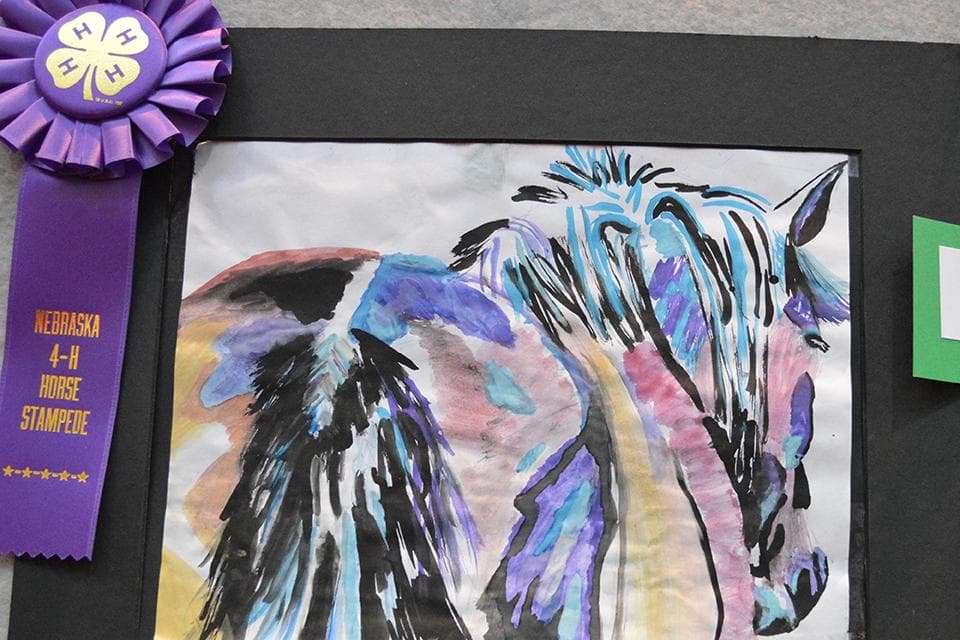The Nebraska 4-H Horse Stampede offers a variety of 4-H horse contests that do not require live animals, including public speaking, demonstration, quiz bowl, art, and photography contests. Youth have the opportunity to display their equine knowledge through these contests both as an individual and as part of a team. The 4-H Horse Stampede is held annually at the UNL RB Warren Animal Science Complex in Lincoln, Nebraska. This year's event will be held Saturday, April 25, and Sunday, April 26, 2026.
Registration
There is a $10 entry fee per participant, a $20 office fee per exhibitor, and a $5 fee for lunch for those participating in horse judging and hippology. Event shirts are also available for pre-order. All orders, fees, and entry forms must be submitted online by Friday, February 26, 2026. All art and photography exhibits must be dropped off at check-in on the day of the event (see schedule for details).
Nebraska 4-H Horse show dress code is required for all in-person contests. Please see pages 23-24 of the Nebraska 4-H Horse Show and Judging Guide for details. Exception: No hats or headgear are permitted.
Online Entry Procedures
Entries for 2026 utilize 4-H Online. Login to your 4-H Online account and click on the events tab, then select the 2026 Horse Stampede event. Or utilize the following link to register (be sure to utilize the same email account used when enrolling in 4-H):
4-H Online (Horse Stampede Event)
T-Shirt
If you are a coach, parent, family member and would like a Stampede T-Shirt please use the following link to place an order:
Volunteer
The Nebraska 4-H Horse Stampede depends on dedicated volunteers to help the event run smoothly.
Thank You
Thank you to the sponsors who make the Nebraska 4-H Horse Stampede possible:
- Carol Estabrook
4-H PROGRAM CONTACT
For questions about the information on this page, please contact:
